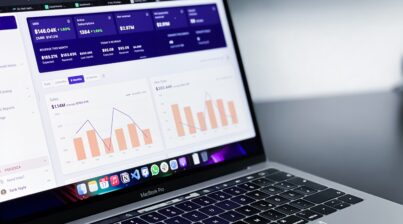Image by Gerd Altmann from Pixabay
Even though HR is relatively new to the data scene, many analytical tools and methods have been developed. Plenty of metrics are out there to analyze all aspects of the employee lifecycle, from recruitment to offboarding. HR dashboards and other visualization tools are available to make HR analytics easier. As the metrics get more sophisticated, so do the analytical tools.
What is Organizational Network Analysis (ONA)?
An organizational network analysis (ONA) looks for patterns within many layers of organizational data. It analyzes how communication, decisions, and information flows throughout the organization to identify those patterns. ONA can identify high performers, key decision makers, engagement influencers, and inclusive practices.
Data is gathered either actively or passively. Active data collection is information solicited from employee feedback surveys. Questions include, “who do you go to when you have questions” or “who makes the decisions for your group”. Passive forms of data are collected from emails and collaboration platforms. Emails are looked at to see who sent what to whom and when. Unfortunately, it is much harder to identify the “why” in passive data.
ONA providing the “why” behind organizational problems
ONA can provide valuable insights into a company to help find solutions to organizational problems.
In one case study, ONA was used to aid change management. The organization was finding it difficult to implement change from the traditional top-down approach. Senior leadership would cascade down information which was not very successful. They decided to use ONA to find an alternative method. Data was collected actively through peer-to-peer assessments. It allowed them to identify the most influential employees throughout the organization and dubbed them as change ambassadors. The change ambassadors became integral to change management and were continuously tapped as an employee barometer.
Another organization used ONA to determine how gender inclusive the organization was. Traditionally, metrics around diversity and inclusion only look at workforce activity. Data focused around hiring, retention, and ratio of the diverse workforce. These really only look at the diversity of the organization, not how inclusive it is. In this case, the organization actively sourced data from a company-wide survey. The goal was to map the network of information to find how information was being shared. The ONA found that women were less likely to be involved in the decision-making and innovation process. Additionally, it uncovered evidence that unconscious bias might be at play.
A word of caution for HR and business leaders looking to use ONA
Accessing and gathering more employee data raises privacy concerns. As we face ever-increasing privacy laws (see CA state laws and the UK’s GDPR), we as HR professionals must be conscientious and purposeful on the employee data we collect. Yes, it may not be a privacy violation to analyze emails as they are typically viewed as company property. But, we have to ask ourselves, is it ethical? As is true with any data practice, the key here is transparency. Be open and communicate why the organization is collecting the data. Explain how it will be used and analyzed. This will improve the data received, especially in data collected actively through feedback surveys.
HR analytics can be made easier with an HR dashboard to help create visualizations. Sign up today for a free demo of our automated HR dashboard.












